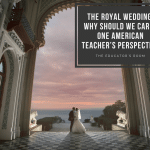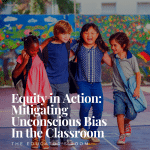Overview: Deepen learning experiences
Using the Depth and Complexity Icons to design more meaningful learning experiences.
As a teacher, I constantly ask myself how to make my students’ learning more meaningful. As a primary grade teacher, I struggle with wanting to move away from “cutsie” activities to more authentic learning experiences for my first graders. I know that my young students can rise to the challenge if just given the opportunity. So, this year I have challenged myself to design more meaningful learning experiences for them using the depth and complexity framework.
Depth and Complexity Icons
One way I have done this is through the implementation of the Depth and Complexity icons which were developed by Dr. Sandra Kaplan, Bette Gould, and Sheila Madsen in the late 1990’s. They were originally meant for use with Gifted and Talented students, but have since then been used successfully with all students to deepen their learning of the core curriculum.
The framework consists of eleven icons: Big Idea, Details, Language of the Discipline, Patterns, Rules, Trends, Unanswered Questions, Ethics, Over Time, Across Disciplines, and Multiple Perspectives. The icons act as lenses to view content in a different and deeper way. Upon learning more about these icons, I knew they could provide my students with the challenge I had been looking for. However, from my initial research, I saw Ddepthand Ccomplexitybeing used primarily with intermediate gand older grades I was intimidated to dive into these icons with my first graders because they seemed so abstract to me.
The Research of Depth and Complexity
However,I came across a wonderful blog written by Joelle Trayers called Not Just Child’s Play, and I saw her doing some incredible work with her kindergarten and first graders. Once I saw some of her ideas of how to implement Depth and Complexity with the youngest of students, I was given the courage I needed to jump into using the framework in my classroom.
From my experience, a great way to start with these Depth and Complexity icons is through read-aloud and academic conversations in the classroom. Read-alouds provide a great entry point for teachers to gain more experience with these icons because read-alouds are an integral part of most, if not every, primary grade classroom. It’s an accessible way to become more confident in understanding the icons. While I have not yet introduced every icon to my first graders, we have been gaining experience with Multiple Perspectives, Big Ideas, Details, Patterns, and Ethics.
Multiple Perspectives Icon
An icon I found great success starting with is Multiple Perspectives because most students, with support, are able to think from another’s point of view. A great book to do this work with is Recess Queen by Alexis O’Neil and Laura Huliska-Beith. Rather than asking students to think about how the student getting bullied feels, we can turn our focus to the bully, or the character Recess Queen, in this book.
- Why might she be acting the way she is?
- Why is she being unkind to other students?
Thinking from another’s perspective can also build empathy for others which is a great lifelong skill.
Other questions you can ask that align with the Multiple Perspectives icon are:
- What perspectives do you hear?
- What perspectives are missing?
- Can you explain why the character feels a certain way?
- Compare the way two characters think about the same thing.
Asking any of these questions will push students toward a deeper understanding of the book.
Big Idea Icons
Another icon that is accessible to young students is Big Idea. When thinking about Big Idea, we can ask the following questions:
- What is the theme or author’s message?
- What is your opinion of the book?
- Can you summarize the book?
- How does the Big Idea of this book compare to the Big Idea of another book you’ve read recently?
These are questions that can be asked with any and every book, so it’s another great way to increase the depth of your students’ thinking.
Details Icon
The Details icon lends itself nicely to being paired with Big Idea.
Some questions to ask regarding Details are:
- What Details support the Big Idea of the book?
- What are the most important character traits of the main character?
When we ask students to analyze the main character, it allows them to gain a deeper understanding of how the character’s feelings and actions contribute to the story as a whole.
Patterns Icon
The Patterns icon has been a personal favorite of my students to discuss. We discuss the following questions during read-aloud:
- How can you predict what will happen next based on what has already happened?
- How did a character in your book break their usual pattern of behavior?
- Predict what would happen if the character broke their usual pattern of behavior.
When I read Lily’s Purple Plastic Purse by Kevin Henkes to my class, we analyzed Lily’s pattern of behavior. My students noticed that Lily was always respectful to her teacher until she drew the mean picture of Mr. Slinger. This broke her usual pattern of behavior and made the story really interesting. When my students made this connection on their own, I realized how the rigor of our academic conversations had risen since implementing the Depth and Complexity icons.
Ethics Icon
Ethics is another really fun icon to discuss with younger students. When we think about the Ethics icon, we are thinking about fairness. There are all sorts of moral dilemmas in children’s books that are fun to discuss with young kids.
Some questions you can ask about Ethics are:
- Is what’s happening in the story fair?
- How would you have handled the problem the character had?
- What changes could we make so the character’s experience is more fair?
A debate was sparked in my classroom when we read Lily’s Purple Plastic Purse. In the story, Lily gets her purse taken away by her teacher, Mr. Slinger, because she opened it when he asked her not to. Some of my students felt it was not fair of Mr. Slinger to take her purse away when she had never gotten in trouble before. Students felt that Mr. Slinger asking her to put the purse in her backpack would have been a more fair consequence. I have read this book to my students each year, and never before have we had such interesting conversations regarding the story. I attribute this to the use of the Depth and Complexity icons which allow my students to reach higher level thinking and understanding.
Facilitating the Next Steps
You will be amazed how some modeling and thinking through these questions will quickly allow your students to make their own connections to these icons during read-alouds daily. Recently, I was reading a book, now make “Ms. Miller, this is ethics! What’s happening to the character isn’t fair!” I then was able to prompt my class to think about what would need to change for the experience to be more fair for the character.
I have been amazed at the level of thinking my first graders have been able to reach with just a few weeks of using these icons during my read-alouds. I really believe that when challenged appropriately, even the youngest of students can rise to the occasion and take their thinking further than we have imagined. The beautiful thing about the Depth and Complexity icons is that their purpose is for students to think deeper. There might not be a correct answer when discussing some of these questions; the purpose is for them to engage in meaningful academic conversations. I would encourage any primary grade teacher who wants their students engaged in higher-level thinking to try these icons in their classroom.
About the Author

Mandy Miller is a primary grade teacher in Texas who is passionate about preparing students for future success by fostering creativity, critical thinking, collaboration, and communication skills at a young age. She graduated with an Early Childhood Education degree from the University of Missouri, Columbia. In addition, she received her master’s degree in Literacy Education from the University of Colorado, Denver with an endorsement to be a reading specialist. Miller has experience in teaching first and second grade and is currently a Gifted and Talented teacher for highly gifted first graders.







very informative information